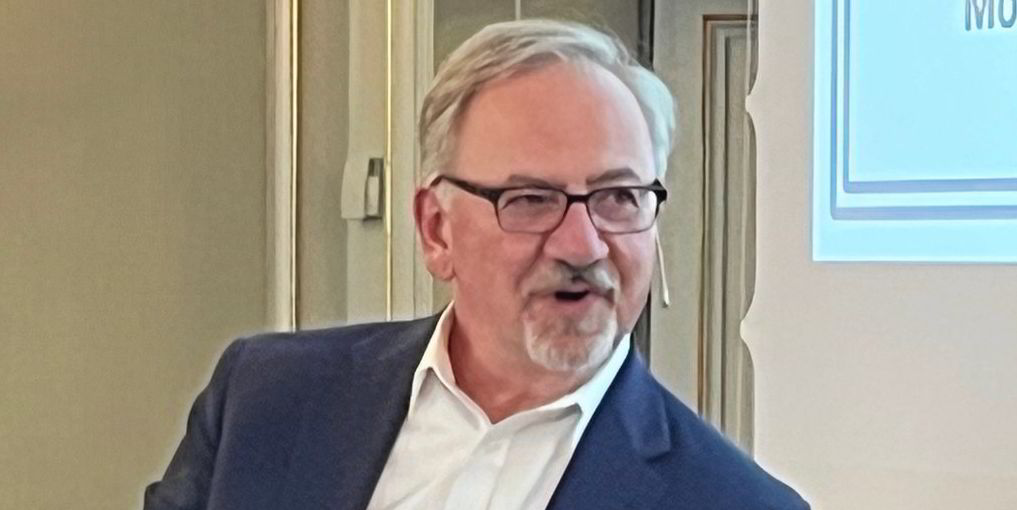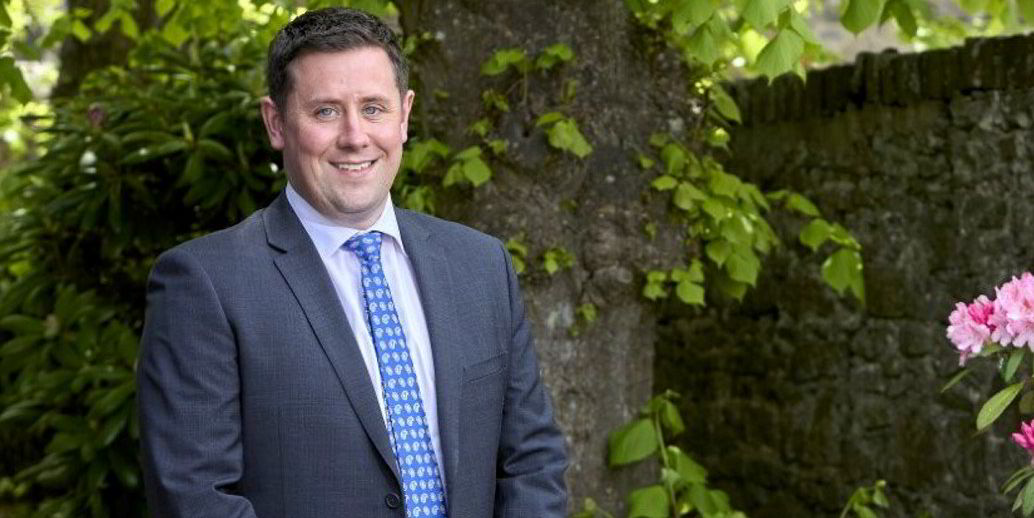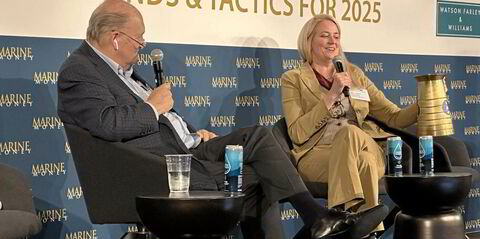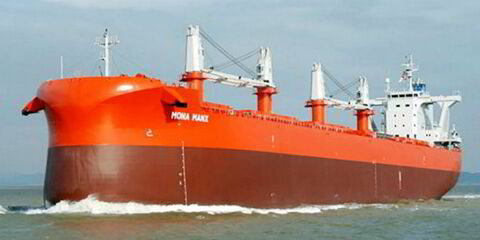At an Oslo Marine Money forum this week, four leading shipowners in offshore wind told how they are addressing the challenges of serving a market where demand is rocketing, but the types and specifications of ships needed are constantly shifting and growing.
Over two-thirds of the wind turbine installation vessels (WTIVs) now on order were represented on the 8 June panel, by the count of its organiser maritime lawyer Charlie Papavizas, who chairs the Washington-based maritime practice of the Winston and Strawn law firm.
Chief executive officers Mikkel Gleerup and Even Larsen were there representing Denmark’s Cadeler and Norway’s Hafram Wind, alongside Guro Hoyaas Loken as head of Norway’s Windstaller Alliance of Aker, Deep Ocean, and Solstad, and chief operating officer Mark Handin of Maersk Supply, a heavyweight that is a newcomer to offshore wind.
Wind farm developers have historically expected shipowners to invest in sophisticated specialised vessels, but have only been willing to charter them one job at a time. The lack of long-term commitments has been both an operational and a financial challenge.
“We have now signed a five-year contract, so that is changing,” said Cadeler’s Gleerup. “For our second F-class vessel, we are also negotiating a long-term contract.”
In a niche market with restricted supply, the uncertainty about what specifications will be needed in the future works in favour of the high-end players as wind-farm project developers move to secure tonnage, he believes.
“When the customers don’t know what their developments will look like, the solution is to find the most advanced vessels in existence,” said Gleerup.
Havfram Wind’s Larsen underscored that the trend towards multiyear contracts was mainly for large, high-specification vessels, but according to Gleerup, it is not restricted just to newbuilds.
“We are now negotiating a 10-year contract for a legacy asset,” the Cadeler boss said.
Bottlenecks could make for interruptions and uncertainty, not least because of the increasing size of turbines, and also because wind farm developers have hundreds of different possible foundation designs and specifications to settle on, which will affect what kind of vessels they need. Another bottleneck comes from the shortage of harbour and shoreline space for staging areas.
Windstaller Alliance head Hoyaas Loken was most focused on the threat of a human resources bottleneck, and pointed to the need to scale up training and build operational competence.
The demand graph for WTIVs and foundation-laying tonnage is currently a steep upward curve and Papavizas wanted to know if that would continue long or if it might begin to show some cyclicality.
It was not a prospect that seemed to worry the panellists, even if Maersk Supply’s Hardin said he expected the demand trajectory to develop from a rocket to a slow climb.
“Eventually every country with a coastline will build and harvest offshore wind,” said Havram Wind’s Larsen.
Just the green energy needed to decarbonise shipping will need many times the currently installed offshore wind capacity, according to Gleerup.
“Yes, there will be cyclicality, but there will be plenty of work for all of us here,” he said.
The Marine Money forum was held in connection with the biennial Nor-Shipping congress.




